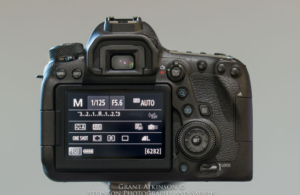Why is the camera lens circular but the image sensor is rectangle in shape?
Have you ever wondered why camera lenses are circular, yet the images they produce are rectangular? This seemingly odd combination stems from both optical principles and historical reasons. Let’s dive into the fascinating world of camera design to uncover the reasons behind this design choice.
Basics of Camera Lenses
Function of Camera Lenses
Camera lenses are designed to gather light from a scene and focus it onto the image sensor. They play a crucial role in determining the quality, sharpness, and clarity of the image.
Structure of Camera Lenses
Lenses are composed of multiple glass elements arranged in a circular fashion. This circular design helps in bending and focusing light more effectively than other shapes would.
Basics of Image Sensors
Function of Image Sensors
The image sensor’s job is to convert the focused light from the lens into electrical signals, which are then processed to form a digital image.
Structure of Image Sensors
Image sensors are typically rectangular or square. This shape is more practical for capturing wide and tall scenes, aligning with the standard aspect ratios used in photography and videography.
Optical Principles
Light Path Through a Circular Lens
A circular lens efficiently directs light through its center, minimizing optical aberrations. The circular shape ensures that light entering from any direction can be focused precisely onto the sensor.
Capturing Rectangular Images
Despite the circular lens, the image formed at the focal plane can be cropped to a rectangle, which aligns with how human vision perceives scenes — wider than they are tall.
Historical Reasons
Evolution of Camera Design
Early cameras used circular plates, but as technology evolved, rectangular plates became more common. This shift was driven by the need for more practical and versatile image formats.
Technological Constraints
Manufacturing rectangular sensors is simpler and more cost-effective. It also matches the standard aspect ratios of printed photos and display screens.
Practical Advantages of Circular Lenses
Lens Design and Manufacturing
Circular lenses are easier to produce and maintain optical quality. The round shape also allows for better accommodation of various lens elements needed for zoom and focus adjustments.
Versatility and Compatibility
Circular lenses can be used with different types of cameras and sensor sizes, providing flexibility in design and application.
Practical Advantages of Rectangular Sensors
Image Format and Framing
Rectangular sensors provide a more natural framing for images, matching the common aspect ratios like 4:3, 16:9, and 3:2. This makes it easier to display and print images without extensive cropping.
Sensor Manufacturing and Cost
Producing rectangular sensors is more economical, as it maximizes the use of semiconductor wafers during manufacturing, reducing waste and cost.
The Role of the Image Circle
Definition of the Image Circle
The image circle is the circular area of light projected by the lens onto the sensor. The sensor captures the usable portion of this circle, which is typically rectangular.
How the Image Circle Interacts with Sensors
The image circle must be large enough to cover the entire sensor to avoid dark corners (vignetting). This ensures the sensor captures a well-lit, uniform image.
Vignetting and Image Quality
What is Vignetting?
Vignetting is the reduction of an image’s brightness or saturation at its edges compared to the center. It often occurs when the image circle does not adequately cover the sensor.
Minimizing Vignetting in Photography
Using lenses with a larger image circle or adjusting the aperture can help reduce vignetting, ensuring more uniform image quality.
Future Trends in Camera Design
Advances in Lens Technology
Ongoing advancements in lens materials and design could lead to more efficient light transmission and better optical performance, potentially influencing lens shapes.
Potential Changes in Sensor Design
Future innovations might include sensors with different shapes or flexible designs, adapting to new types of cameras and user needs.
Conclusion
The circular design of camera lenses and the rectangular shape of image sensors are results of both optical efficiency and practical considerations. Understanding these aspects helps appreciate the complexities of modern camera design and the interplay between historical practices and technological advancements.
explore the technicalities of DSLR camera focusing in ‘How Does a DSLR Camera Adjust Its Lens to Focus on Different Distances?‘
RELATED POSTS

Understanding Different File Types and Their Impact on Memory Card Storage

How Can You Fix Focus Issues in a Camera Lens That Consistently Produces Soft or Blurry Images?

How Photographers Can Optimize Their Use of Multifunctional Control Dials for Faster Adjustments ?

